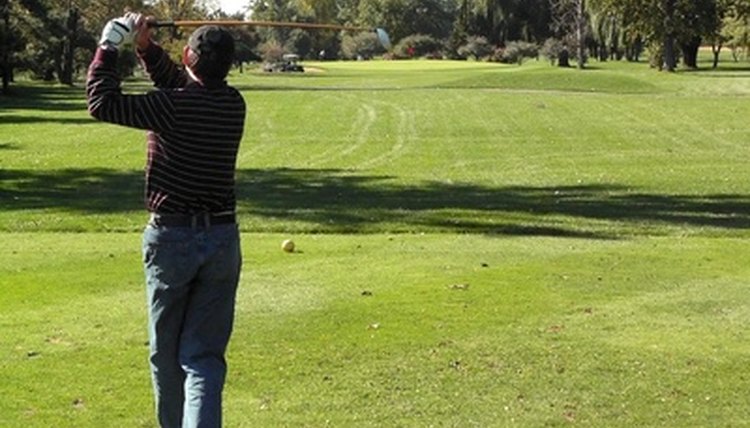Golf Swing Plane Explained

The swing plane affects the direction the golf ball travels when hit and the trajectory of the shot. The plane is an imaginary flat surface used to describe the path and angle on which the club swings.
The golf swing consists of the backswing plane and the downswing plane, and can be on plane, upright (above the plane) or flat (below the plane). Former PGA Tour professional Ben Hogan popularized the swing plane in his 1957 book "Five Lessons; The Modern Fundamentals of Golf."
Function
The golf swing follows a circular pattern, or arc.
The swing plane is literally the tilt of the inclined plane made by the club's shaft as it travels along this arc.
That tilt can be upright like a Ferris Wheel, flat like a baseball swing or somewhere in between.
The plane can also tilt left or right of the target line or directly along the target line. An imaginary line from the ball to the golfer's shoulder establishes the backswing plane. In his book, Hogan describes the backswing plane as "a large pane of glass that rests on the shoulders as it inclines upward from the ball."
On Plane

Illustration of the swing plane.
The club is on plane when an extension of the butt end of the shaft intersects the target line.
If the butt of the club points outside the target line (flat), the club head will travel in to out; if the butt points inside the target line (upright), the head will travel out to in. An in-to-out path can create a pushed or hooked shot, while an out-to-in path can create a pulled or sliced shot.
Factors Affecting Plane

Illustration of the swing plane.
Each golfer has his own swing plane, determined by his body type and the club he is using.
The length of the golfer's arms, legs and torso affect his posture; the length of the club affects the angle of the shaft at address. A 5-foot-2 golfer holds a 40-inch-long club at more of an angle (flatter) than a 6-foot-2 golfer; therefore, a shorter golfer will tend to have a flatter on-plane swing than a taller golfer. If that same 5-foot-2 golfer swings the club below that plane, his swing is flat in relation to the plane.
Downswing Plane

Illustration of the swing plane.
On the downswing, if the club travels below the backswing plane (flat), the butt of the club points outside the target line and the club head will travel in-to-out.
If the club travels above the backswing plane (upright), the butt points inside the target line and the head will travel out-to-in. An in-to-out path can create a pushed or hooked shot, while an out-to-in path can create a pulled or sliced shot.
If the club is on plane in the downswing, the club will travel straight down the target line. The result will be a straight shot--if the clubface is square, or facing the target at impact.
Variations

Illustration of the swing plane.
The greatest players have had swing planes that range from very flat--Ben Hogan, Gary Player and Lee Trevino--to upright--Jack Nicklaus, Tom Weiskopf and Tom Watson. The flatter swing has a better chance of staying connected, making it easier to time the swing. It also causes the ball to come off the clubface on a lower trajectory with a tendency to draw, if the clubface is square to the target. The more upright swing wanders less from the target line and allows a better chance for a straight shot, if timed correctly.
Writer Bio
Kim Kleinle is a PGA/LPGA professional and a member of a select group certified in instruction by the Professional Golfers' Association. She began writing in 1980 after earning her degree. Her work has appeared online, in "Northeast Golfer" and in newspapers, including the "Scranton Times." She holds a Bachelor of Arts in journalism from Point Park University, Pittsburgh.
